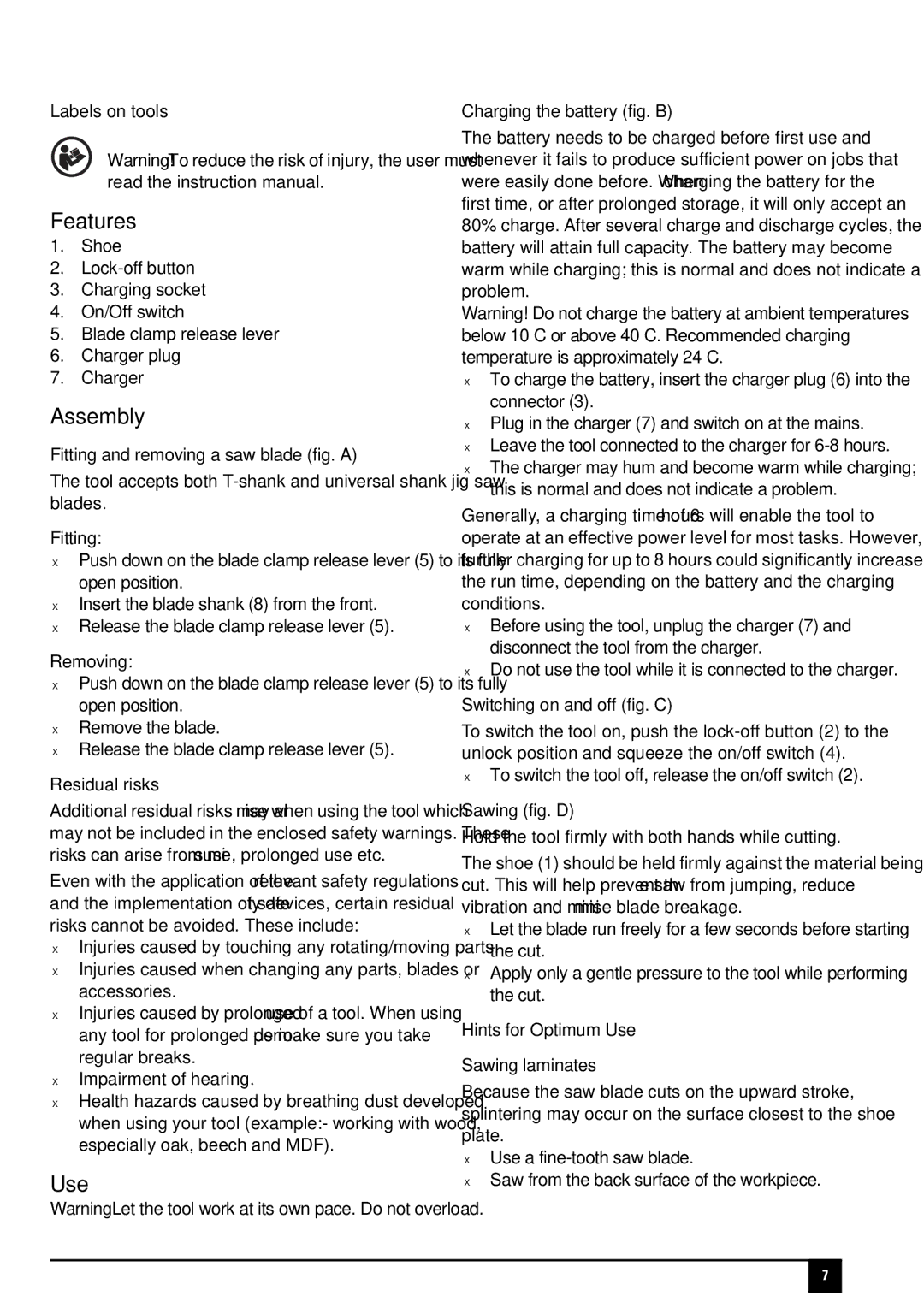CHS6000-JP01, CHS600 specifications
The Black & Decker CHS600 and CHS6000-JP01 are innovative trimming tools designed to meet the needs of both professionals and DIY enthusiasts. These cordless hedge trimmers combine power, precision, and convenience to provide an unparalleled cutting experience.One of the standout features of these models is their lightweight design, which enhances maneuverability and reduces user fatigue during extended periods of use. With a weight that allows for easy handling, even in hard-to-reach areas, users can comfortably maintain their hedges, shrubs, and other greenery.
Powered by a high-performance lithium-ion battery, the CHS600 and CHS6000-JP01 deliver consistent power throughout their runtime, enabling users to tackle dense foliage without worrying about power loss. The battery technology also ensures faster charging times and a longer lifespan, making it a reliable choice for frequent use.
Another significant characteristic of these hedge trimmers is their dual-action blade design. This feature provides a smoother cutting experience and minimizes vibrations, which leads to a cleaner cut with reduced chances of damaging the plants. The precision-ground blades are also engineered to stay sharper for longer, requiring less frequent maintenance and sharpening.
Safety and user-friendliness are paramount in the design of the CHS600 and CHS6000-JP01. They are equipped with safety switches to prevent accidental starts, while the ergonomic handle ensures a secure grip, which is essential when working on uneven surfaces or in challenging conditions. The rotating handle allows for flexibility and ease of use when trimming at different angles.
Moreover, both models boast a well-balanced weight distribution, further enhancing control and reducing strain on the user's hands and arms. They also come with a protective blade guard for safe storage and transport, ensuring that users can keep their tools in optimal condition when not in use.
In summary, the Black & Decker CHS600 and CHS6000-JP01 are powerful, efficient hedge trimmers that combine cutting-edge technology with user-friendly features. Whether trimming hedges, maintaining garden aesthetics, or shaping plants, these tools are designed to deliver exceptional performance and convenience. With their advanced battery technology, sharp blades, and ergonomic design, they are an excellent choice for anyone looking to maintain their outdoor space efficiently.

